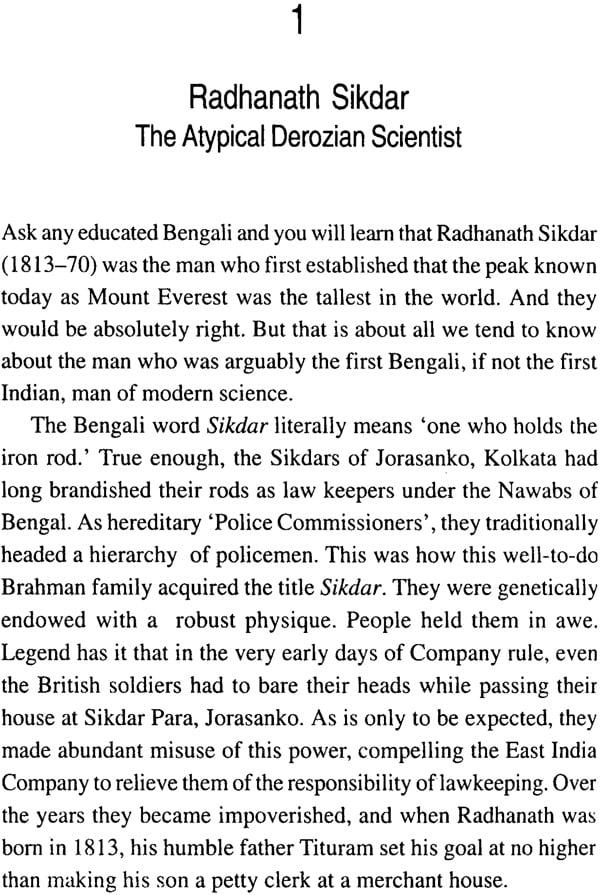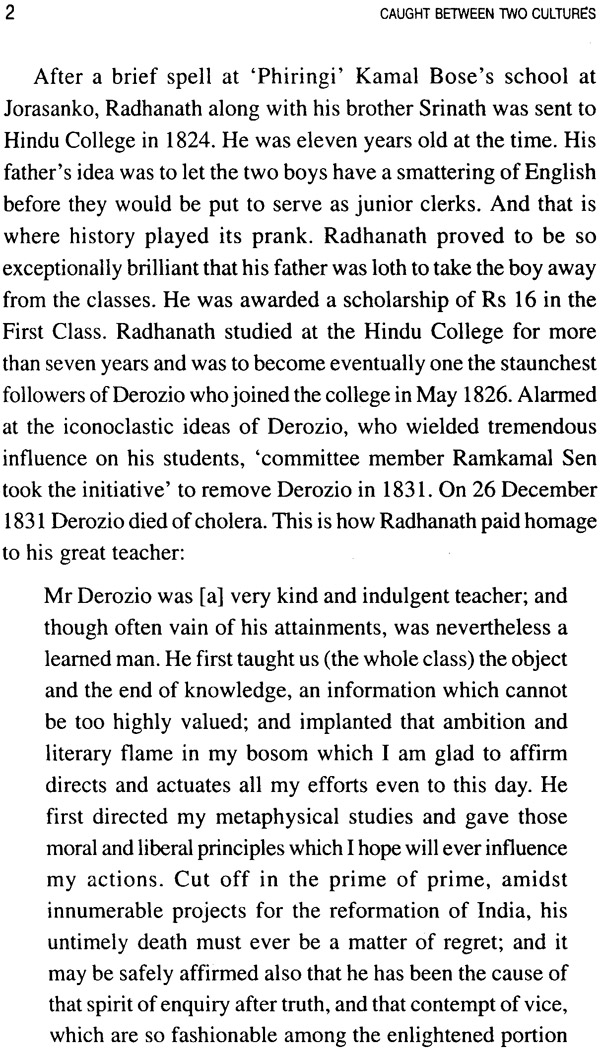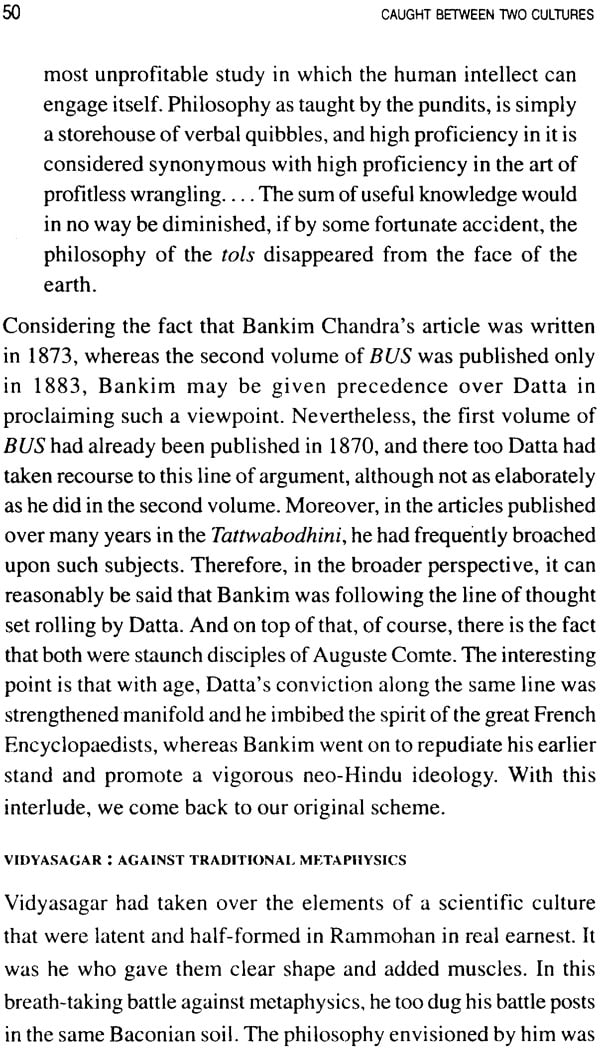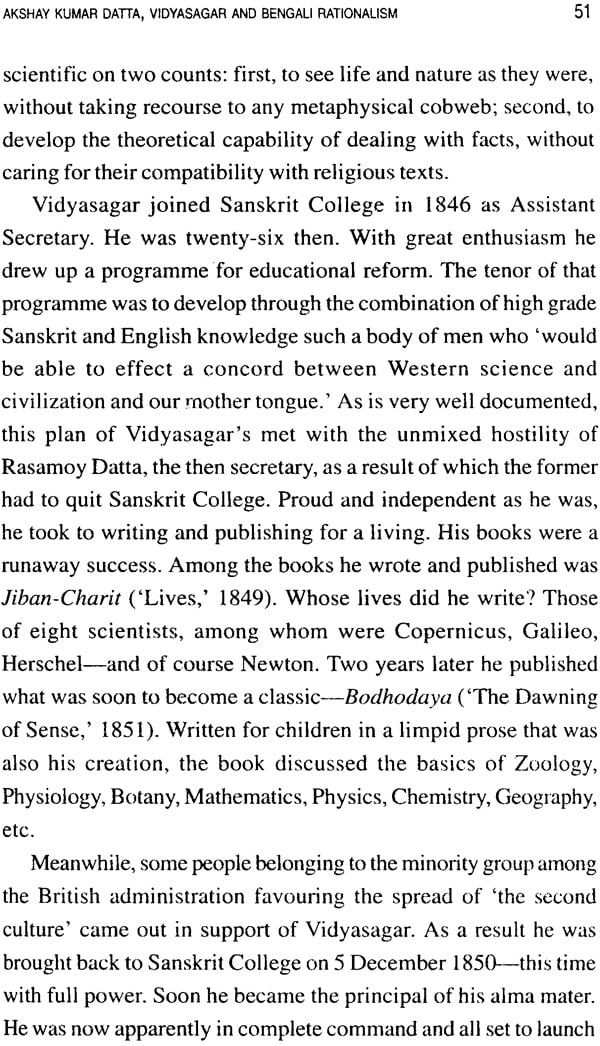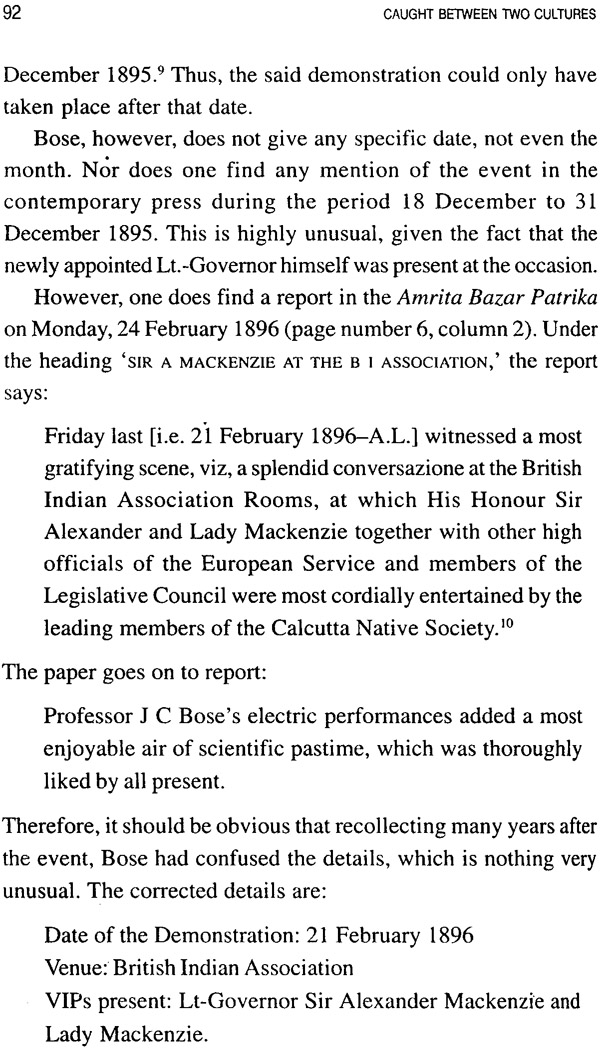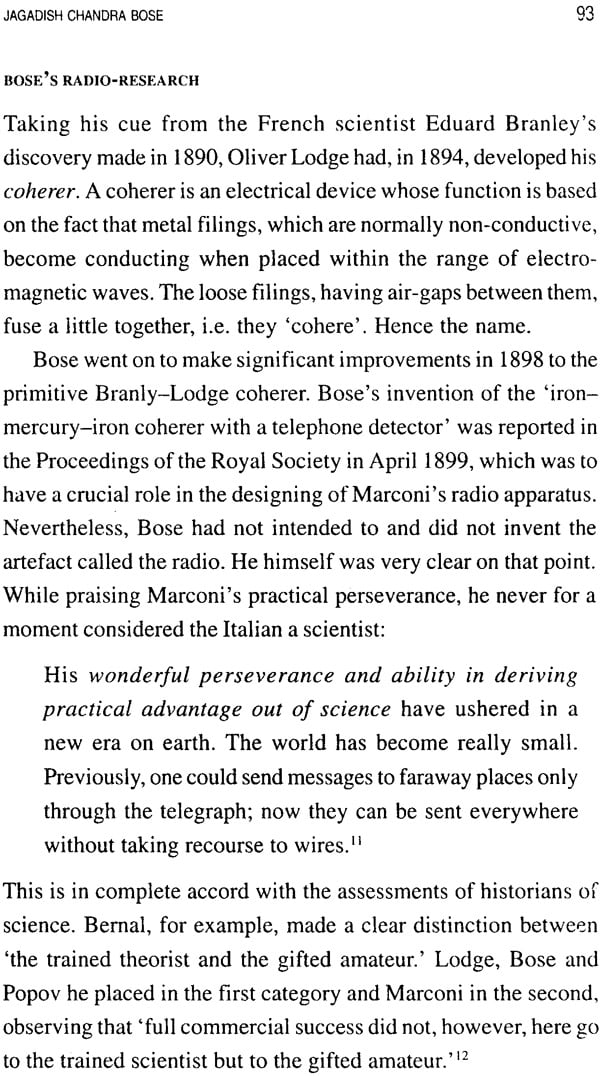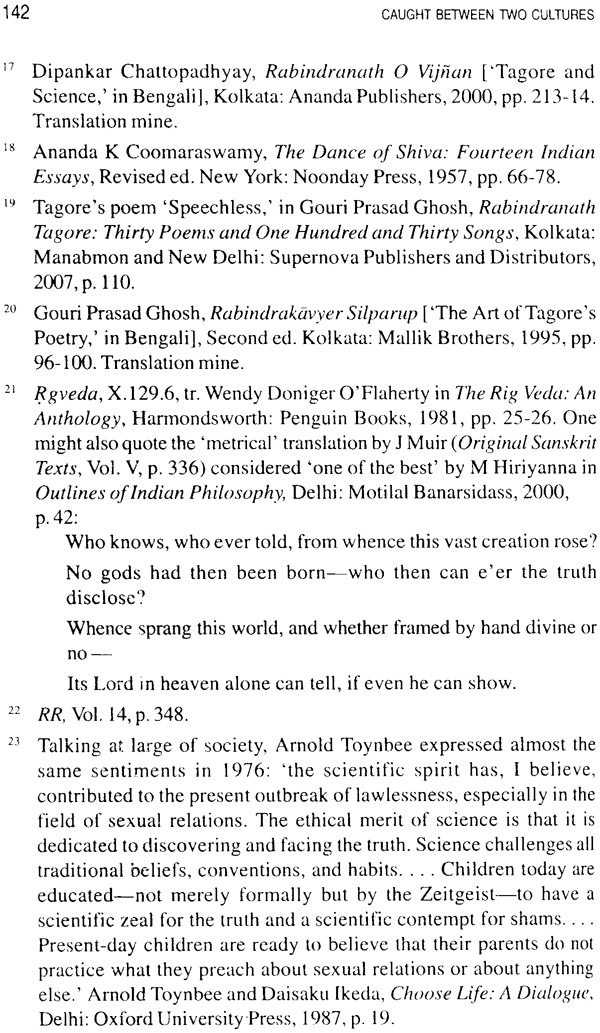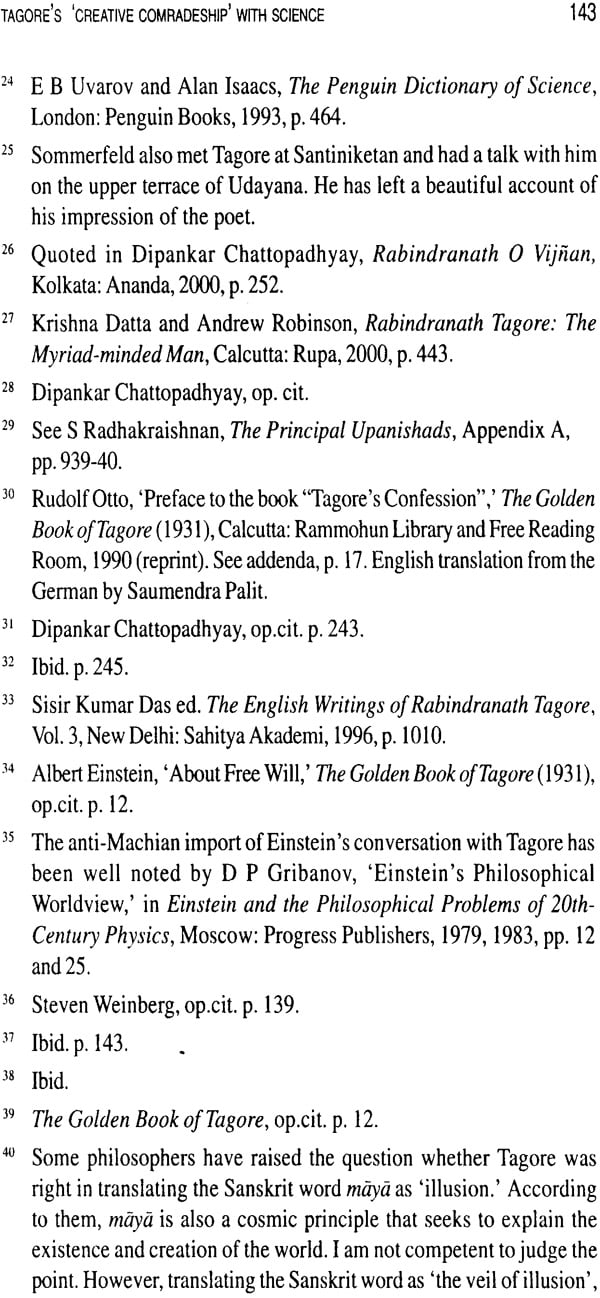
Caught Between Two Cultures Science in Nineteenth Century Bengal
Book Specification
| Item Code: | NAN507 |
| Author: | Ashish Lahiri |
| Publisher: | Thema Books, Kolkata |
| Language: | English |
| Edition: | 2013 |
| ISBN: | 9789381703212 |
| Pages: | 160 |
| Cover: | Paperback |
| Other Details | 8.5 inch x 5.5 inch |
| Weight | 210 gm |
Book Description
Ashish Lahiri, historian of science, explores J D Bernal's contention that science in colonial India lacked a 'comprehensive critical tradition' and an 'internal security,' and follows the punctuated evolution of a scientific spirit that sought to bridge 'the two cultures' in nineteenth century Bengal, documenting how Radhanath Sikdar, Vidyasagar, Akshay Kumar Dutta, Bhudev Mukhopadhyay. Jagadish Chandra Bose, Prafulla Chandra Ray and Rabindranath Tagore contributed to the project, and how organized religion intervened to drive 'the two cultures' apart.
In his book The Social Function of Science (1939), talking about science in colonial India, J D Bernal wrote about the lack of a 'comprehensive critical tradition' and of an 'internal security.' Ever since I first read the comment in the 70s, I have wondered what exactly the two phrases meant. At the outer level was the obvious fact of colonialism; but there were other intertwined layers needing exploration. Then again, there was the famous 'two cultures' hypothesis of C P Snow, underscoring the distance between science and the humanities. As an Indian, I was surprised to see how completely Snow ignores the role of organized religion in effecting this fissure.
In a way, this book is an attempt to explore these questions in the backdrop of nineteenth century Bengal. If the last article overlaps on to the twentieth century, that is deliberate.
I have been writing fairly extensively in Bengali on the history and philosophy of science; off and on, also in English. Written over a span of more than ten years, the common thread of questions running through some of these essays perhaps justifies binding them together in a book.
For the article on Radhanath Sikdar I gratefully acknowledge the encouragement and the help I received from Ms Ajana Choudhury; Dr Sisir Sen, New Delhi; the Pavlov Institute, Kolkata; Mr Shyamal Guha of Boi-Chitra, Kolkata; and the INSA, New Delhi. My friend Dr Basudev Mukherjee obliged me by publishing some of the articles in the journal Psyche and Society edited by him. I must particularly thank Dr Amiya Dev for provoking me into writing on Tagore. The article on Vivekananda draws largely on a Bengali article of mine included in Vigyan O Matadarsha [Science and Ideology, Ababhash, Kolkata, 2nd ed. 2011]. Some portions of the articles have, in various forms, been published in Frontier. The piece on Vidyasagar and Akshay Kumar Datta was included, in a somewhat different form, in the anthology Akshaykumar Datta: The First Social Scientist in Bengal, edited by M Saiful Islam (Renaissance, Kolkata 2009). I take pleasure in thanking them all.
Finally, I must thank Samik Bandyopadhyay and his team for their unfailing editorial nitpicking, which has repaired at least some of the technical lacunae of the book.
Contents
| 1 | Radhanath Sikdar: The Atypical Derozian Scientist | 1 |
| 2 | Vidyasagar and Akshay Kumar Dutta: The Two Pioneers of Rationalism in Bengal | 38 |
| 3 | Bhudev Mukhopadhyay: Between Idea and Substance | 60 |
| 4 | Hindu Science': Vivekananda's Strange Volte-face | 74 |
| 5 | Jagadish Chandra Bose: Caught between Two Cultures? | 85 |
| 6 | Tagore's 'Creative Comradeship' with Science | 109 |
| 7 | Profiles | 145 |
Sample Pages
